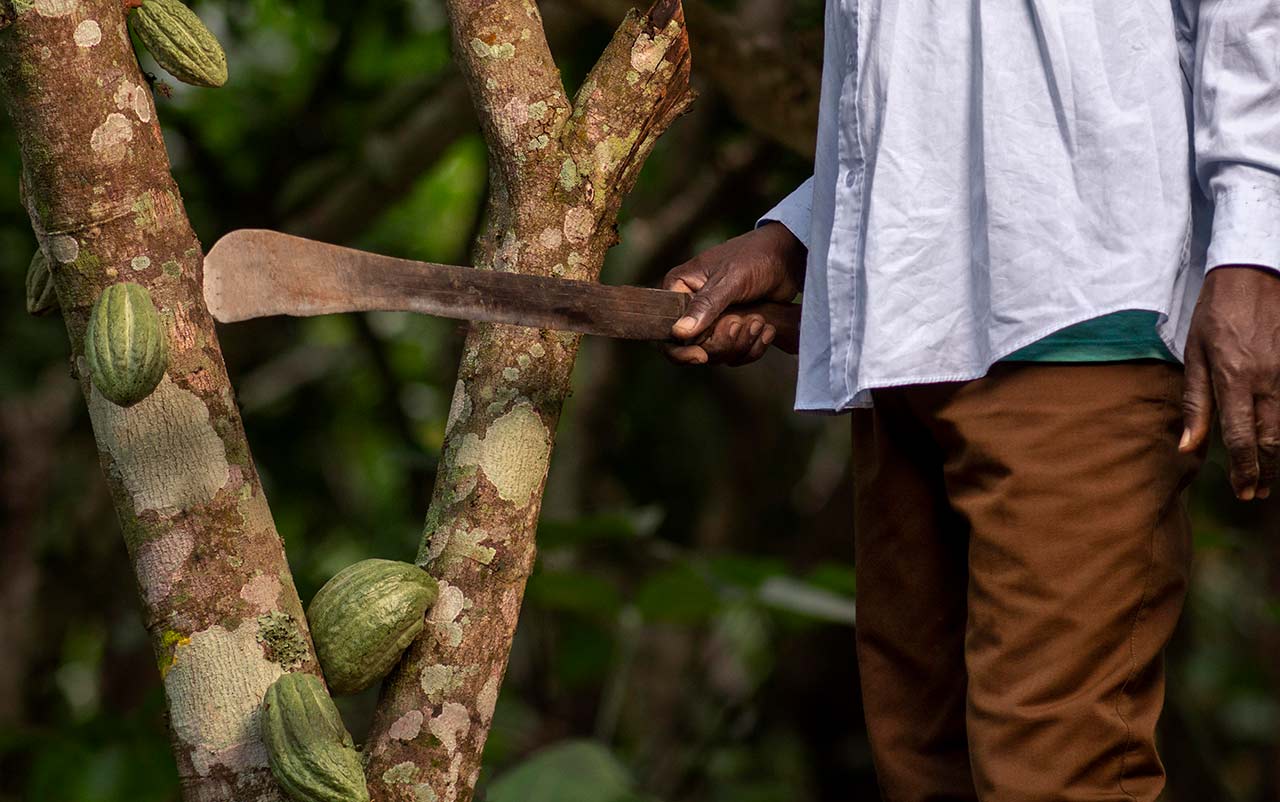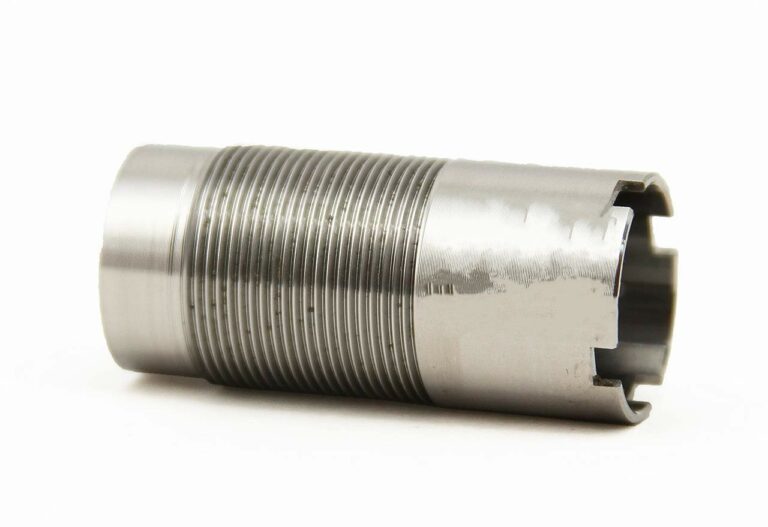Types Of Machete: Comprehensive Guide For Enthusiasts
Despite their modern reputation as serial killer weapons, machetes are versatile tools that have been utilized for centuries in various tasks like agriculture, hunting, and even combat. With origins and designs stemming from different regions around the world, each type of machete is crafted for a specific purpose or use.
You may be familiar with some popular styles of machete, like the Kukri, Panga, or Parang, but there’s far more to the world of machetes than these three. From the leaf-shaped, single-edged Barong machete used in the Philippines to the weighted, heavy-duty designs for clearing thicker vegetation, there’s a machete for every situation. Whether you’re a farmer, a hunting enthusiast, or a survival expert, understanding the various types of machetes will help you choose the right blade for your needs, and which one to add to your prepper arsenal.
Types of Machetes
You may already know machetes come in a variety of shapes and styles, each type designed for specific tasks and environments. These are some of the most common types:
Bowie Machete
Inspired by the iconic Bowie knife, this machete has a clip point and a curved cutting edge. It’s great for chopping and slashing through vegetation as well as for hunting and self-defense purposes.
Bush Machete
This versatile type of machete has a straight-backed blade and a slightly curved cutting edge. It’s perfect for a wide range of tasks including clearing brush, cutting small branches, and chopping wood. Bush machetes are the go-to choice for many outdoor enthusiasts.
Cane Machete
Primarily used for cutting and harvesting sugar cane, this machete has a narrow, hooked tip, called a billhook, designed for precise cuts. Its thin, flat blade allows for efficient slicing and easy maneuverability through dense foliage.
Colima Machete
This short and wide-bladed machete is named after the Mexican state of Colima. It’s designed for chopping and cutting through tough vegetation with minimal effort. The Colima machete is ideal for clearing paths and preparing campsites.
Hawkbill Machete
With a distinctive curved cutting edge similar to a hawk’s beak, this machete is excellent for pulling, cutting, and slicing through vines, branches, and flexible materials. Its unique shape allows for better control and precision.
Kukri Machete
Originating from Nepal, this machete is famous for its inwardly curved blade, which excels in both chopping and slicing tasks. The kukri is not only suitable for clearing vegetation but also for hunting, carving, and self-defense.
Panga Machetes
A popular type in Africa and the Caribbean, panga machetes have a broad, strong blade with a convex cutting edge. This design allows for efficient chopping and hacking through thick vegetation and small branches.
Parang Machete
Commonly used in Southeast Asia, parang machetes have a curved, heavy blade ideal for cutting through dense jungle, undergrowth, and small branches. Its robust design and weight distribution make it a powerful cutter while remaining easy to handle.
Heavy Machetes
As the name suggests, these machetes are heavier than other types of machetes and feature stronger, thicker blades. They’re intended for demanding tasks such as chopping hardwood, bushes, and large branches.
Survival Machete
These machetes are designed for all-purpose use in various survival scenarios. They often feature additional tools like serrated edges, sawbacks, and gut hooks, making them the perfect companion for any outdoor adventure.
Bolo Machete
The Bolo Machete, originating from the Philippines, is a versatile tool that has been widely adopted for agricultural tasks, hunting, and even self-defense. Distinct from many other types of machetes, the Bolo has a unique design that lends it both functionality and aesthetic appeal. So, let’s dig a bit deeper.
Philippines Bolo Machete
The defining characteristic of the Philippine Bolo Machete is its wider blade tip. This design gives the tool additional heft at the tip, enhancing its chopping capability, which is especially useful for dealing with thick vegetation and other dense materials. The curvature of the blade aids in swinging motions, making it a favorite for tasks like clearing brush or chopping wood.
Complementing its blade, the Bolo Machete’s handle often features a finger groove, designed to provide a secure and comfortable grip. This ergonomic feature ensures better control when using the machete, be it in the dense jungles of the Philippines, maintaining one’s yard, or engaging in other tasks.
Its efficiency and practical design have made the Bolo Machete popular not only in its homeland but also in other regions of Southeast Asia and, increasingly, in the United States. Over time, people from a wide range of backgrounds have recognized the utility of this tool, employing it for a diverse set of tasks—from path-clearing and wood-chopping to finer applications like peeling fruits.
Barong Machete
In the world of machetes, the Barong Machete, which also hails from the Philippines, stands out with its unique leaf-shaped blade. Traditionally used by several tribes in the region, the Barong Machete, with its thick blade and single sharp edge, has been a trusted tool for a myriad of tasks, from hunting to livestock slaughter.
The effectiveness of the Barong wasn’t confined to everyday tasks, though. It also played a significant role in combat. Legends abound about its prowess in battle, including tales of it cutting through European armaments (probably a bit of an exaggeration). Nonetheless, the Barong, with blade lengths typically ranging from 8 to 22 inches, was a formidable weapon in the hands of traditional Filipino warriors.
In the contemporary world, the Barong Machete remains very popular, not just in its native Philippines but globally. Its distinctive leaf-like shape and robust blade make it well-suited for a range of tasks. Whether you’re embarking on outdoor adventures or preparing for survival scenarios, the Barong’s durable construction and proven lineage ensure it’s up to the challenge.
Bowie Machete
The Bowie machete, named after American frontiersman Jim Bowie, is a popular choice among survivalists, hunters, and backwoodsmen. This versatile tool features a clip-point or skinner tip, which makes it perfect for skinning wild game. In comparison to a typical Bowie knife, the Bowie machete is larger and has a wider blade, allowing it to be more effective for chopping and cutting tasks.
As you wield your Bowie machete, you’ll appreciate its well-balanced design and comfortable grip. It’s perfect for a variety of tasks you might encounter in the outdoors, such as clearing brush, chopping firewood, or even self-defense against potential threats. Here are some key distinguishers of the Bowie machete:
- Shape: It has a unique clip-point or skinner tip, ideal for skinning game and precision tasks.
- Size: Bowie machetes are bigger than traditional Bowie knives, making them more suitable for heavy-duty tasks.
- Origin: United States, designed and inspired by Jim Bowie.
- Uses: Versatile tool for hunters, survivalists, and outdoor enthusiasts.
Kukri Machete
Originating from Nepal, the kukri machete is a unique and versatile tool known for its distinct double-curved cutting edge and steadily curved spine. The wider tip of the blade provides excellent chopping power, making it a popular choice for various purposes.
In the hands of the famed Gurkhas, the kukri is not only a practical tool but also carries ceremonial significance. You can use this robust machete for a wide range of tasks, such as slashing through overgrowth, digging, preparing game, or reshaping wood for construction. Its distinctive design makes it stand out among other machete types, and its functionality earned it a place in both military and civilian usage.
When selecting a kukri machete for your needs, take note of the blade’s material, handle design, and size. It’s essential to find a balance between durability, weight, and ergonomics. With the right kukri machete, you’ll have a versatile tool that can manage various tasks in the field, increasing your efficiency and improving your outdoor survival skills.
If you’re looking for a distinctive and practical addition to your survivalist tool kit, the kukri machete is an excellent choice. Its unique design, coupled with its many uses, makes it an invaluable tool for both survival and hunting enthusiasts.
Panga Machete
The Panga Machete, also known as the African Machete or Caribbean Machete, is a versatile tool you’ll find handy in various situations. Originating from Africa and the Caribbean, the panga is characterized by its distinctive upswept curved shape with a slanted tip. This design offers exceptional cutting power, making it well-suited for clearing thick brush, chopping thick vegetation, and cutting small trees.
With a blade length between 16 and 24 inches, the panga machete features a broad curved blade that provides additional weight and strength for efficient chopping and slicing. Its unique bent-up tip concentrates force on a small area, allowing for effective piercing when necessary. You’ll notice that the deep belly of the panga enhances its chopping capabilities while the curvature helps with slicing.
In various parts of the world, the panga machete is also known as the “Rozador” or “Big Knife” due to its powerful abilities. It is a reliable tool for hunters, survivalists, and outdoor enthusiasts who require a reliable and versatile cutting tool.
Billhook Machete
The billhook machete is an ancient agricultural cutting tool that has been around for centuries. Its curved blade is designed for chopping around objects, like tree trunks, and for “snedding,” which means stripping side shoots and buds from branches. The hooked blade is sharpened on the inner curve, making it ideal for gripping and cutting vines and brambles.
Billhooks are versatile tools, perfect for a variety of tasks, including:
- Felling small trees
- Clearing brush
- Stripping logs
- Cutting trails
- Clearing overgrowth
Note: The billhook isn’t technically a machete, it’s its own tool. But, due to similarity in its capabilities and uses, it is often lumped in with machetes.
Bush Machete
A Bush Machete is a popular all-purpose tool that’s perfect for clearing bushes, cutting green vegetation, and working efficiently in various environments. It features a straight-back blade with an even weight distribution, making it easy to use and control.
When you’re out in nature, whether it’s for hunting or evacuating, a Bush Machete can save you energy and time. The design of the blade makes it great for chopping through dense foliage and small branches, clearing a path quickly. A well-crafted Bush Machete will even help with delimbing trees or splitting firewood due to its weight and stout construction.
One key aspect to consider when choosing a Bush Machete is the length of the blade. A longer blade will provide a further reach and increased chopping power, but may also feel heavier and more cumbersome to wield. A shorter blade will be more portable and easier to control, but you may sacrifice some cutting efficiency.
Parang Machete
Originating from Indonesia, the Parang Machete is a versatile and popular tool used for cutting vegetation, woods, and other stalks. With a distinctive curved shape resembling a scimitar, both the spine and the edge of the blade are curved. This design enables the parang to clear a path through thick jungles and tackle a variety of tasks effectively.
In comparison to other machetes, the parang typically has a thicker blade and a more pronounced primary grind. This feature prevents the blade from getting lodged in green wood and ensures smoother, more efficient cuts. You’ll find that the parang tends to be long and either slightly weighted or fairly evenly weighted.
Parang machetes, which are similar to Golok machetes, are common among indigenous people in South East Asia. A fantastic utility instrument, the parang is considered a survival knife capable of handling any obstacle. Its slightly curved blade enables it to overcome thick pieces of wood, making it an extremely powerful tool.
Cane Machete
In Latin America, where sugar cane plantations are abundant, the cane machete is commonly used for cutting through thick and fibrous stalks of sugarcane. This versatile tool has a long, thin blade that’s slightly curved to enhance its cutting capabilities.
The cane machete’s blade is often made from high-carbon steel, ensuring that it maintains its sharpness for prolonged use. Due to its purpose, you’ll find that it has a slightly hooked tip, perfect for slicing through sugarcane with ease. Additionally, the flat side of the blade can be used for crushing the cane, helping you extract juice or prepare it for further processing.
While cane machetes may have originated in Latin America, they’ve become popular all around the world in regions where sugarcane is grown. These machetes are incredibly efficient tools and have found their way into many agricultural industries, making them an important addition to your cutting arsenal.
Golok Machete
Originating from Indonesia, the Golok Machete stands out with its distinctive curved design and a thick blade, setting it apart from other machete varieties. Its unique form, reminiscent of a scimitar, renders it both a practical tool for an array of tasks and a formidable choice for self-defense.
The Golok’s blade, curved on both the spine and the edge, allows for precision in cutting and chopping. Its design provides durability, ensuring it can handle demanding use. The shape of the Golok makes it conveniently portable, lightweight, and easy to maneuver, even in confined spaces.
What sets the Golok apart from other machetes, besides its pronounced curve, is its notably thick blade, which guarantees efficiency and resilience. Whether you find yourself clearing dense brush, cutting through wood, or needing a dependable tool in the wilderness, the Golok Machete proves to be a steadfast ally.
Other Types of Machetes
When choosing the perfect machete for survival prep, here’s a brief rundown of some other types you might encounter, and how they can serve you:
Colima Machete
The Colima machete features a slightly curved blade that makes it ideal for cutting through the dense vegetation found in tropical environments. Its unique design allows it to easily slice through a variety of plant materials, making it a great choice for clearing paths or creating makeshift shelters in the jungle.
Heavy Machete
When you need a bit more power behind your swing, a heavy machete can come in handy. These machetes have thicker, more robust blades that provide increased cutting power. They are perfect for more demanding tasks such as chopping wood, splitting logs, and breaking through thicker branches or roots. While you can find many styles of heavy machete, and they are good at big tasks, keep in mind that the added weight of a heavy machete can also cause fatigue more quickly during extended use.







